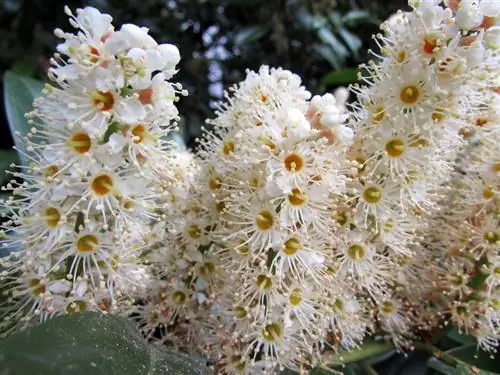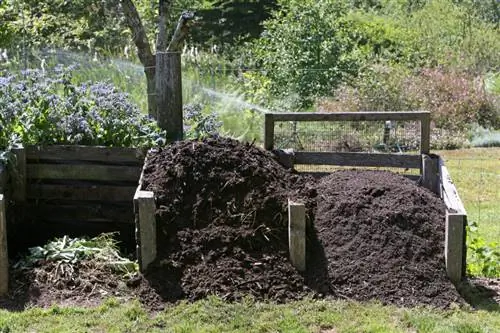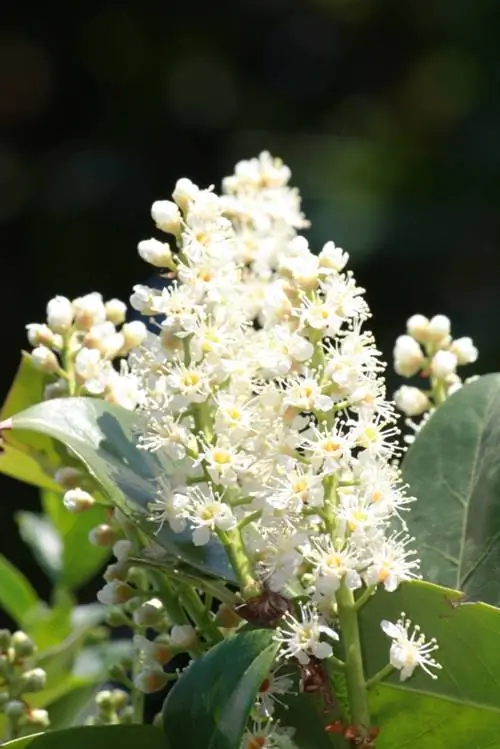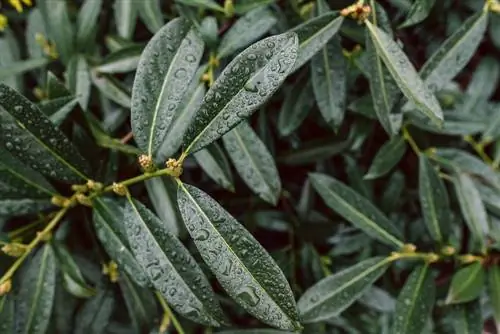- Author admin [email protected].
- Public 2023-12-16 16:46.
- Last modified 2025-01-23 11:20.
With a maximum height of around two meters and its wide, bushy growth, the cherry laurel Etna is ideal for underplanting or for greening a roof garden. Since Etna only grows about a meter wide, this laurel cherry is also suitable as an evergreen decoration in smaller gardens.
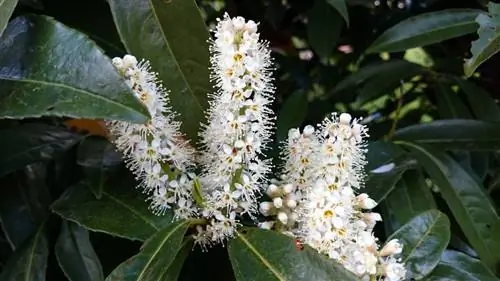
How do you properly care for the Etna cherry laurel?
Caring for the Etna cherry laurel includes regular watering without waterlogging, fertilizing with slow-release fertilizer in spring, pruning after flowering, winter protection if necessary and checking for pests and diseases.
Water requirements of the cherry laurel Etna
Like all cherry laurel species, Etna is sensitive to waterlogging and prefers uniform soil moisture. However, the wood usually survives short dry phases undamaged. If the soil feels dry, it is recommended to flood or water the cherry laurel and then let it dry for a few days.
How much fertilizer does Etna need?
Fertilize the laurel cherry in spring with a slow-release fertilizer. Horn shavings and compost, but also well-seasoned horse or cow manure have proven to be effective. You can fertilize young plants again in June.
When do potted plants need to be repotted?
Since the cherry laurel needs a lot of nutrients, you should always move it to a new planter when the roots almost completely fill the pot. The best time for repotting is spring.
How to cut?
The Etna cherry laurel must be cut back at least once a year so that it retains its compact and bushy growth. You should do this cut in the spring immediately after flowering. Since electric cutting tools injure many of the large leaves, pruning must always be done with sharp hedge trimmers (€24.00 on Amazon).
Does the Etna laurel cherry need winter protection?
Etna is one of the cherry laurel species that can withstand frost relatively well. However, as with many bay cherries, cold damage can occur in extreme temperatures below zero. If you cut out the affected shoots in spring, the tree will recover quickly in most cases. Young plants and shrubs that thrive in very harsh areas should still receive adequate winter protection.
What pests or diseases could affect the plant?
Fungal infestation can occur during prolonged drought and wet summers. Depending on the weather conditions, powdery mildew or powdery mildew or shotgun disease could occur. You can combat all fungal diseases with suitable sprays.
Black weevils prefer to settle on plants with robust foliage. You can recognize an infestation by the semicircular eating spots along the edges of the leaves. Occasionally the Etna laurel cherry is also infested by lice.
Tips & Tricks
The new shoots of this laurel cherry are initially bronze-colored and stand out very attractively from the dark green foliage. This special feature of the tree comes into its own particularly in sunlight and creates attractive design accents.



